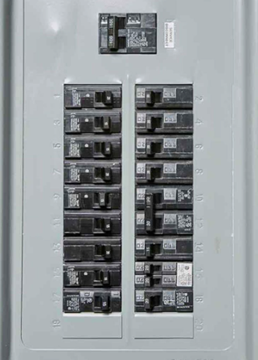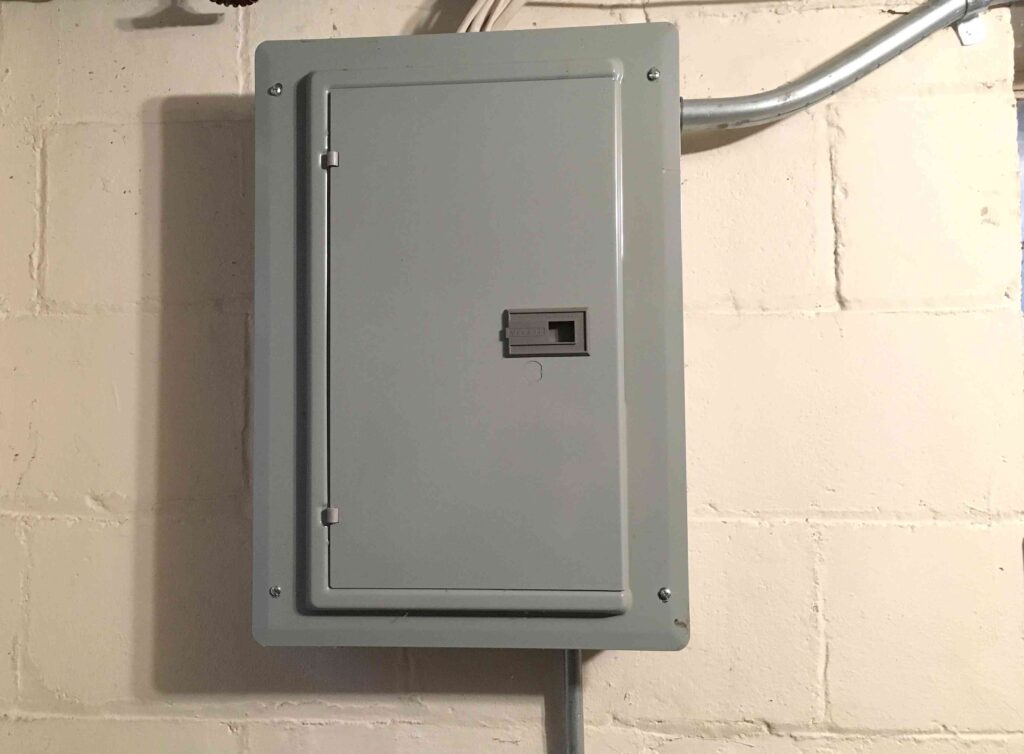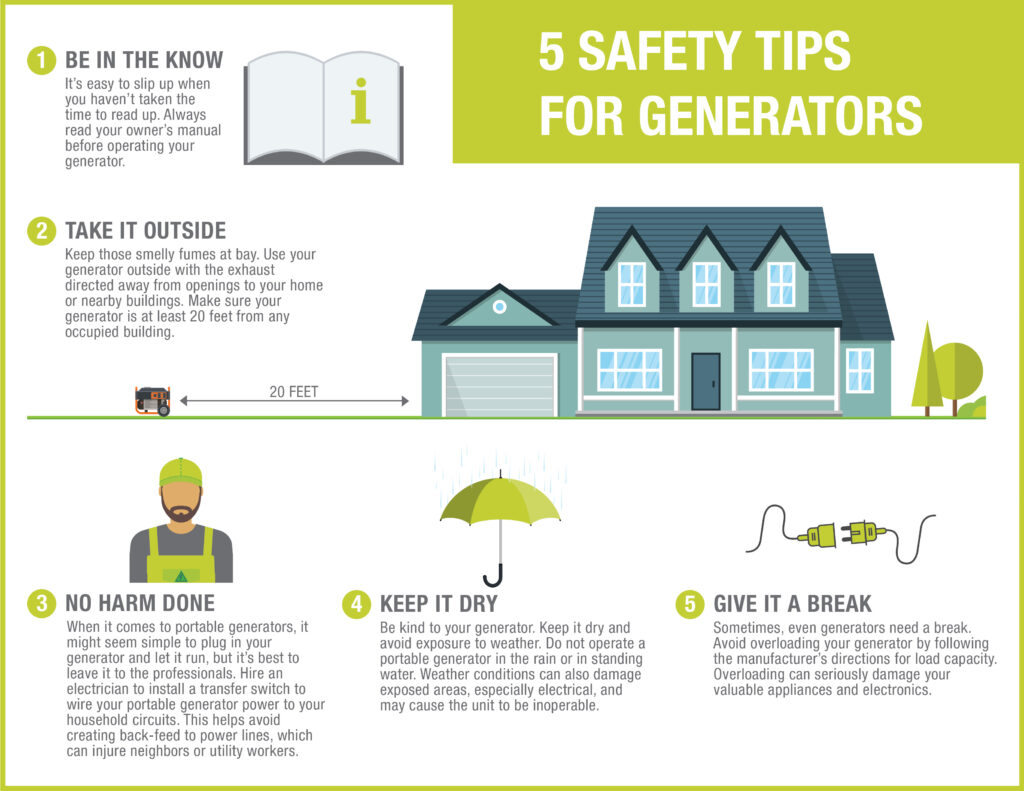Hurricane Safety For You and Your Family
Your safety is important to us. With great power comes great responsibility.
Check out some more tips and resources for hurricane Safety
What If I need to evacuate?
Before You Evacuate
- Prepare Your Home:
- Turn Off Power: Shut off the main breaker in your electrical panel to prevent electrical fires and damage when power is restored.
- Unplug Appliances: Unplug all non-essential appliances and electronics to protect them from power surges.
- Secure Electrical Systems: Ensure that all outdoor electrical equipment is securely fastened and waterproofed.
- Plan Your Route:
- Know Evacuation Routes: Familiarize yourself with local evacuation routes and shelters.
- Transportation: Ensure your vehicle is fueled and ready. If you do not have a vehicle, arrange transportation with neighbors or local authorities.
During Evacuation
- Stay Informed:
- Monitor Alerts: Keep updated with weather forecasts and evacuation orders via radio, TV, or mobile alerts.
- Follow Instructions: Adhere to instructions from local authorities and emergency services.
- Travel Safely:
- Avoid Floodwaters: Do not drive through flooded areas. Even a small amount of moving water can sweep away a vehicle.
- Secure Loose Items: Ensure all loose items in and around your home are secured or brought inside to prevent them from becoming projectiles.
Where is my breaker?
The main breaker panel is usually located in a utility room, basement, garage, or sometimes an exterior wall of the house. Look for a metal box mounted on the wall.


How do I turn off my breaker?
Open the Panel Door:
- Accessing the Breakers: Open the metal door of the breaker panel to access the breakers. You may need a key or screwdriver to unlock the panel, depending on its design.
Look for the Main Breaker:
- Position: The main breaker is typically larger than the other breakers and is located at the top or bottom of the panel. It may also be positioned to one side if the panel is mounted sideways.
- Amperage Rating: The main breaker is usually labeled with the amperage rating (e.g., 100, 150, 200 amps). This number indicates the maximum current the breaker can handle and is often printed on the toggle switch of the main breaker.
Identify the Toggle Switch:
- Main Breaker Toggle: The main breaker’s toggle switch is often a double-pole switch, which means it’s larger and controls power to the entire panel. Unlike the smaller, individual circuit breakers, it will typically span the width of two standard breaker slots.
Labeling:
- Marked as “Main”: In many panels, the main breaker is labeled with the word “Main” to distinguish it from the individual circuit breakers.
Safety Precautions
- Dry Conditions: Ensure the floor around the panel is dry before opening and working on the panel.
- Proper Tools: Use a flashlight if the area is dimly lit. Ensure you have the necessary tools to open the panel.
Can I use my generator when the electricity is out
Yes you can, but you have to use if safely

What If I only have candles?
Use candles only when absolutely necessary, and never as the primary source of light. Only light them for short periods and extinguish them as soon as you are done.
Proper Placement:
- Stable Surfaces: Always place candles on a stable, heat-resistant surface to prevent tipping over.
- Away from Flammable Items: Keep candles at least one foot away from anything that can catch fire, such as curtains, furniture, bedding, and papers.
Supervision:
- Never Leave Unattended: Do not leave candles burning unattended. Extinguish them if you leave the room or go to sleep.
- Children and Pets: Keep candles out of reach of children and pets to prevent accidental knocks and burns.
Use Candle Holders:
- Sturdy Holders: Use sturdy candle holders that won’t tip over easily. Ensure the holders are made from non-flammable materials.
- Wide Base: Choose holders with a wide base to avoid tipping.
Proper Extinguishing:
- Snuff Out Flames: Use a candle snuffer to extinguish the flame instead of blowing it out, which can cause hot wax to splatter.
- Check Wick: Ensure the wick is upright and centered after extinguishing.
Immediate Actions To Take If Someone Is Being Electrocuted
Immediate Actions During a Storm
- Do Not Touch the Person:
- Avoid Direct Contact: Do not touch the person directly as you could also become electrocuted. The ground may be wet and could conduct electricity.
- Shut Off the Power:
- Turn Off the Source: If it is safe to do so and you have access, immediately shut off the power source. This could be done by switching off the main breaker or unplugging the electrical device from a dry area.
- Use a Non-Conductive Object: If you cannot turn off the power, use a non-conductive object such as a wooden broom handle, plastic rod, or a dry, insulated object to separate the person from the electrical source. Ensure you are standing on a dry, non-conductive surface when doing this.
- Call for Emergency Help:
- Dial Emergency Services: Call emergency services immediately for professional medical assistance.
Applying First Aid
Providing First Aid
- Check for Breathing and Pulse:
- Assess the Person: Once the person is no longer in contact with the electrical source, check if they are breathing and have a pulse.
- Begin CPR if Necessary: If the person is not breathing or has no pulse, start CPR if you are trained to do so.
- Treat Burns and Injuries:
- Cool the Burns: If the person has burns, cool them with cool (not cold) water and cover them with a sterile gauze bandage or a clean cloth.
- Avoid Ice or Ointments: Do not apply ice, butter, ointments, or any other substances to the burns.
- Keep the Person Warm:
- Prevent Shock: Keep the person warm and comfortable to prevent shock. Lay them down with their head slightly lower than their chest and their legs elevated.
What if I need to evacuate ?
Before You Evacuate
- Prepare Your Home:
- Turn Off Power: Shut off the main breaker in your electrical panel to prevent electrical fires and damage when power is restored.
- Unplug Appliances: Unplug all non-essential appliances and electronics to protect them from power surges.
- Secure Electrical Systems: Ensure that all outdoor electrical equipment is securely fastened and waterproofed.
- Plan Your Route:
- Know Evacuation Routes: Familiarize yourself with local evacuation routes and shelters.
- Transportation: Ensure your vehicle is fueled and ready. If you do not have a vehicle, arrange transportation with neighbors or local authorities.
During Evacuation
- Stay Informed:
- Monitor Alerts: Keep updated with weather forecasts and evacuation orders via radio, TV, or mobile alerts.
- Follow Instructions: Adhere to instructions from local authorities and emergency services.
- Travel Safely:
- Avoid Floodwaters: Do not drive through flooded areas. Even a small amount of moving water can sweep away a vehicle.
- Secure Loose Items: Ensure all loose items in and around your home are secured or brought inside to prevent them from becoming projectiles.
What food items should I keep after a hurricane?
Non-perishable items like canned goods, dry food, and items that have been properly stored and sealed.
Can I plug things into my sockets after the hurricane?
Any electrical equipment, such as switches, outlets, light outlets and junction boxes, that has been under water must be replaced. They cannot be safely reused.
Turn Off the Main Breaker
Turning off the main breaker prevents electrical hazards and potential fires when power is restored to a water-damaged home.
What to Do If a Power Line Falls on Your Car
Stay Inside the Vehicle:
- Do Not Exit the Car: The safest place is inside the vehicle as the rubber tires can provide insulation from electrical current.
- Warn Others: Signal anyone nearby to stay away from the vehicle and the downed power line.
Call for Help:
- Contact Emergency Services: Use your mobile phone to call 911 and report your exact location and situation.
- Notify Utility Company: If possible, inform the local utility company about the downed power line.
Wait for Professional Assistance:
- Stay Put: Remain inside the vehicle until emergency responders and utility workers arrive to ensure the power line is de-energized and safe.
If You Must Exit the Vehicle (Only If Absolutely Necessary)
- Jump Clear of the Vehicle:
- No Contact with Vehicle and Ground Simultaneously: Open the door, but do not step out. Instead, jump out and land with both feet together, ensuring that you do not touch the vehicle and the ground at the same time.
- Avoid Shuffling: Hop away from the vehicle with your feet together to avoid creating a path for the electricity to flow through your body.
- Move Away from the Vehicle:
- Shuffling or Hopping: Continue to hop or shuffle with your feet together until you are at least 35 feet away from the vehicle. This helps minimize the risk of step potential, which is the voltage difference between your feet.
Where can I get up to date information on JPS?
What should I do if my power is out for an extended period?
Keep your refrigerator and freezer doors closed to preserve food, and use coolers with ice if necessary. Stay in touch with your utility company for updates on power restoration.
Utilize battery-powered lights and radios to stay safe and informed during power outages.
How long will the power be out after the storm?
JPS Restoration Protocol
-
1
Checking and Repairing Power Plants & Main Transmission Lines
Our first priority is to inspect the entire power system for damage. This is necessary so we can first identify and fix any damage to the power plants and the main transmission lines that take power from our generating stations.
-
2
Getting Power To Essential Services
Once it is safe to start turning the lights back on, electricity is first restored to the main lines that provide electricity to essential services such as hospitals, airports, communication systems, and water supply facilities.
-
3
Fixing Large Power Lines Serving the Largest Number of Customers
The next stage in our restoration is to get as many customers as possible restored quickly by repairing those large distribution lines that serve several communities.
-
4
Fixing Smaller Power Lines
Having fixed the larger power lines, attention is now turned to fixing the smaller power lines serving smaller groups of customers.
How long will the power be out after the storm?
JPS Restoration Protocol
-
1
Checking and Repairing Power Plants & Main Transmission Lines
Our first priority is to inspect the entire power system for damage. This is necessary so we can first identify and fix any damage to the power plants and the main transmission lines that take power from our generating stations.
-
2
Getting Power To Essential Services
Once it is safe to start turning the lights back on, electricity is first restored to the main lines that provide electricity to essential services such as hospitals, airports, communication systems, and water supply facilities.
-
3
Fixing Large Power Lines Serving the Largest Number of Customers
The next stage in our restoration is to get as many customers as possible restored quickly by repairing those large distribution lines that serve several communities.
-
4
Fixing Smaller Power Lines
Having fixed the larger power lines, attention is now turned to fixing the smaller power lines serving smaller groups of customers.
General Electrical safety for Customers
Your safety is important to us. With great power comes great responsibility.
Follow our simple electrical safety tips to keep yourself and your family safe at home.
-
Cut off the electricity.
If the device that is causing the electrical fire is found, and you can reach the cord and outlet safely, unplug it or turn off the circuit breaker.
-
Use a Type C Fire extinguisher or Baking Soda
If you don’t have a fire extinguisher, you may use baking soda to smother and extinguish an electrical fire.
-
Don’t use water to put it out
Water is a natural conductor of electricity and if you throw water on an electrical fire, you can get shocked or electrocuted.
Also, water may enable to fire to spread by conducting electricity throughout the room and potentially igniting flammable materials.
-
Use a Fire Blanket or Heavy Item of Clothing to Put Out Small Fires
Fire blankets are suited for small fires, but if one is not on hand, a dense blanket or item of clothing will work. These also smother the flames, but it’s essential to be precise when using any materials – the wrong move could fan flames, making the problem worse.
It’s essential to practice caution when using any materials to smother a fire.
What are some causes of electrical fires?
1. FAULTY SOCKETS & OUTLETS
Most electrical fires are caused by faulty electrical outlets or worn out sockets that aren’t properly grounded. With age, the wiring behind sockets and outlets wears, the wires loosen over time and can eventually break and cause a fire.
2. LIGHT FIXTURES & FITTINGS
Another common cause of electrical fires are lamps, lightbulbs and light fittings. It’s important to follow the wattage guidelines for all light fixtures and lamps in your home and to never exceed the recommended amount. If a light bulb with too high a wattage is used a fire can start.
Placing materials such as cloth or paper over lamp shades can also cause a fire to start as the material can heat up and ignite. As a result, lamps and lampshades should never be covered.
3. EXTENSION LEADS
When large numbers of appliances are plugged into extension leads this can create an excessive power load on a single socket which it may not be able to handle.
Where possible, appliances should always be plugged directly into an outlet or if it’s necessary to use an extension lead, they should be used as a temporary measure.
If there aren’t enough outlets in your home to accommodate your needs, then an electrician can install additional outlets.
4. OUTDATED WIRING
Wiring in older homes often isn’t up to handling the increased demands and numbers of electrical appliances the average home now has. Usually, breakers are triggered when a circuit is overloaded with too much electricity, but old breaker boxes may have worn connectors that don’t work which can cause the system to overload and catch fire.
5. OLD OR FAULTY APPLIANCES
Similar to outdated wiring, using old or dated appliances can be a fire hazard as they may not be up to standard when it comes to wattage usage, material quality and safety regulations.
Old and well used appliances may have a worn cord which can send heat onto combustible surfaces like floors, curtains and rugs which can start a fire.
The grounding plug should also never be removed from a cord so that it can be used in a two-prong electrical outlet.
